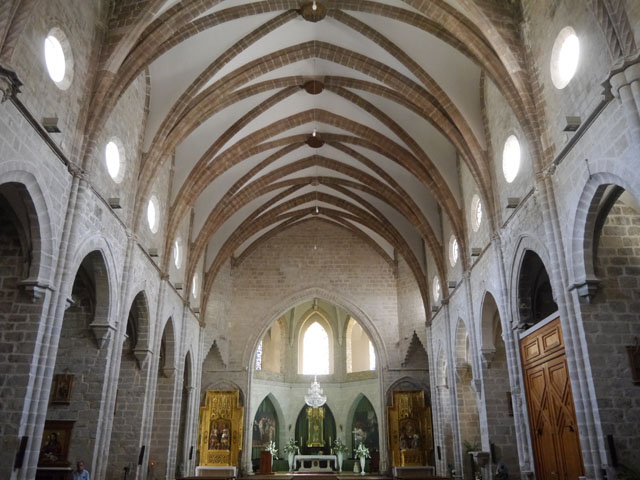Collegiate Church of Gandia

Temple promoted by Alfonso the Elder at the end of the 14th century and enlarged by María Enríquez in 1500.
Acceso: Plaza de los Apóstoles, 3
Dirección postal:
Calle Abadia 7 467 46701 - Gandia
☎ 662.495.880
The construction of the Collegiate Church of Gandia was promoted by Alfonso the Elder at the end of the 14th century. The temple, dedicated to Santa María, was built following the style of Catalan-Aragonese Gothic architecture of that time, with a single nave with five sections and chapels between the buttresses.
From this first phase is the door of Santa María or the Market, decorated with the image of the Assumption and geometric and vegetal elements. The building was low-rise, with few openings to the outside and a sober, austere appearance.
The church was elevated to the category of collegiate church by Alexander VI (Rodrigo Borja) in 1499. His daughter-in-law, María Enríquez, proceeded to its renovation and expansion between 1500 and 1507, extending the original structure. Four more sections were added to complete the nine that currently exist, following the Gothic style, and a new door was opened, that of the Apostles, in transition to the Renaissance.
María Enríquez spared no expense and hired renowned masters such as Pere Comte (the “architect” of the Lonja de Valencia), the sculptor Damián Forment (author of the cathedral altarpiece of Santo Domingo de la Calzada and the Pilar de Zaragoza) and the Italian painter Paolo de Sanleocadio.
The remains of Pedro Luis and Juan Borgia, first and second dukes of Gandia, the latter husband of María Enríquez, were transferred from Rome to the collegiate church.
Inside there is a chapel dedicated to Saint Francisco de Borja, patron saint of the city.
The collegiate church, burned down during the Spanish civil war, was restored immediately after the war, in the 1940s.






